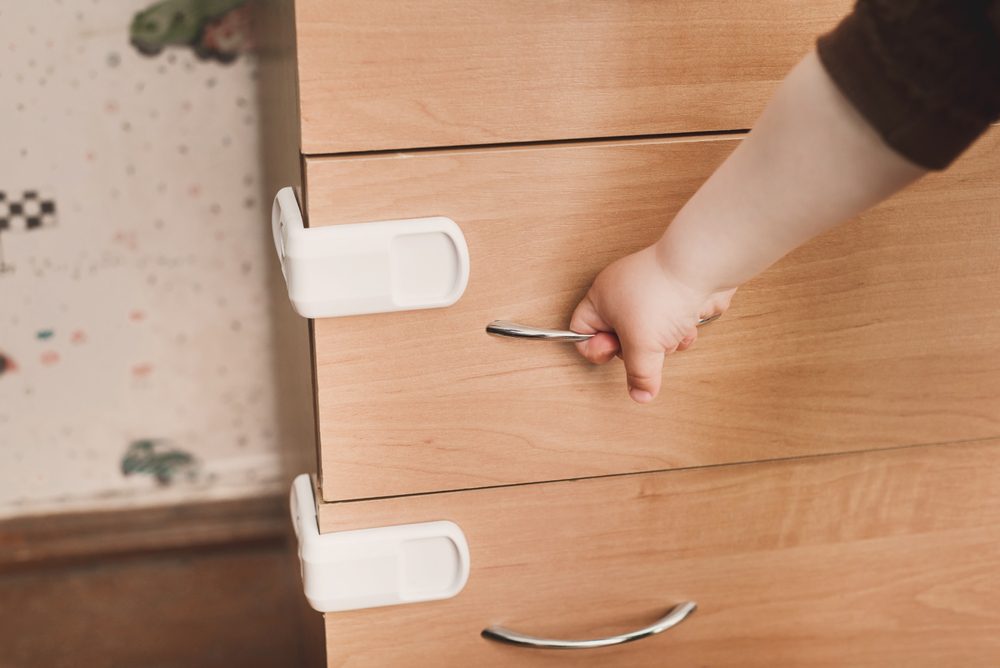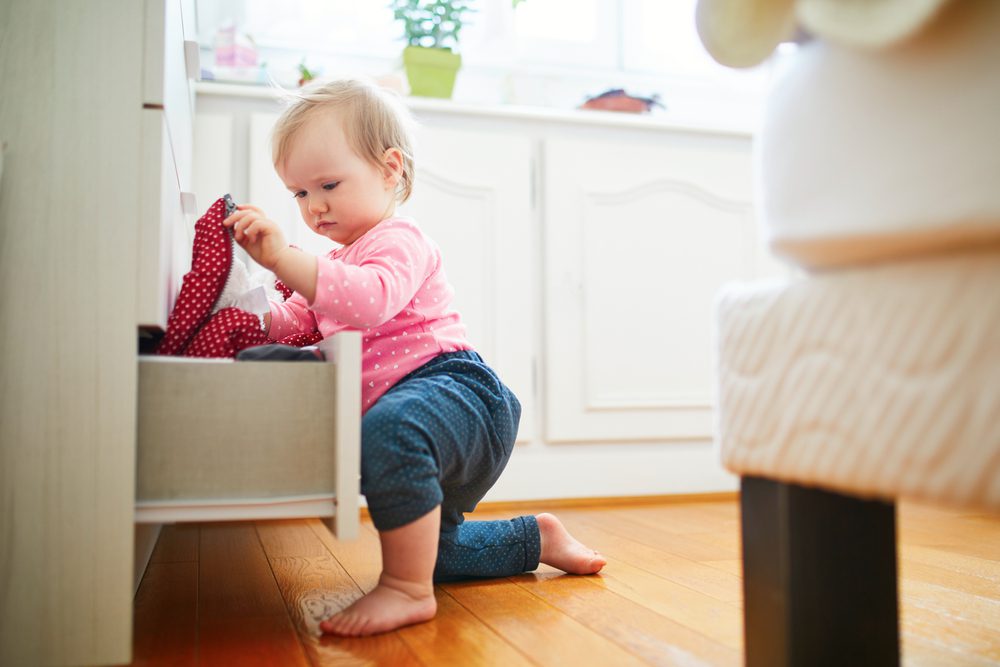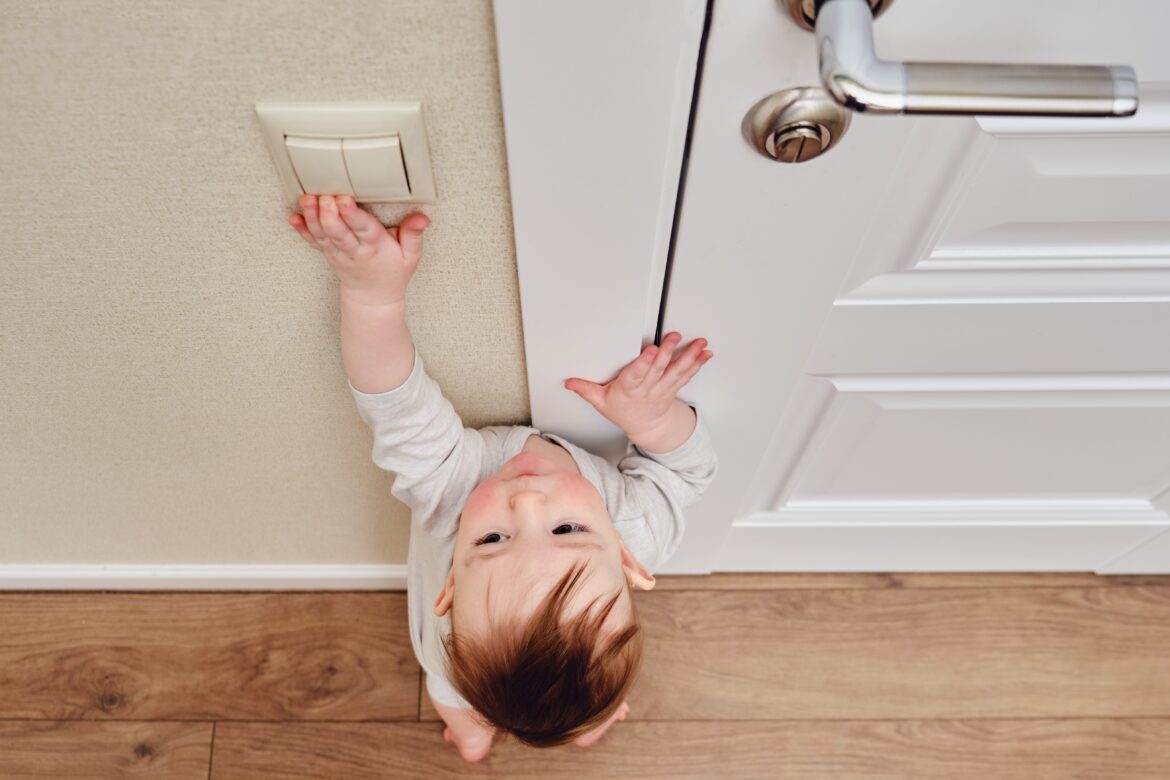Bringing a new baby home is a thrilling and joyful experience. However, with this new addition comes a host of responsibilities, one of the most crucial being baby-proofing your home. Ensuring your living space is safe for your little one is essential to prevent accidents and give you peace of mind. In this comprehensive guide, we will walk you through essential tips for baby-proofing your home effectively.
Why Baby-Proofing is Important
Babies are naturally curious, and as they grow, they start moving around more. This curiosity can lead them to explore places and things that may not be safe. From sharp edges and electrical outlets to small objects that can be swallowed, your home is filled with potential hazards. Baby-proofing reduces these risks, allowing your baby to safely explore their surroundings..

Getting Started: Assessing Your Home
Before you start baby-proofing, take a thorough look at your home from a baby’s perspective. Crawl around your house to identify potential hazards that may not be obvious from an adult’s height. Create a checklist of areas that need attention. Here are a few key areas to keep in mind:
1. Living Room
2. Kitchen
3. Bathroom
4. Nursery
5. Bedrooms
6. Stairs
7. Windows
Essential Baby-Proofing Tips
1. Secure Furniture and Appliances
One of the primary risks for toddlers is heavy furniture and appliances tipping over. Ensure that all bookshelves, dressers, and TVs are securely anchored to the walls. Use anti-tip brackets or straps to prevent any accidental toppling.
2. Cover Sharp Edges and Corners
Babies and toddlers are prone to falls as they learn to walk. Cover sharp edges and corners of furniture with cushioned guards to protect them from injuries.
3. Install Safety Gates
If your home has stairs, safety gates are a must. Install gates at the top and bottom of the stairs to prevent your baby from climbing up or down unsupervised. Additionally, use gates to block off rooms that are not baby-proofed.
4. Lock Cabinets and Drawers
Put childproof locks on cabinets and drawers, especially the ones with dangerous items like cleaning supplies, medications, and sharp objects. This simple step can prevent your baby from accessing hazardous materials.
5. Cover Electrical Outlets
Electrical outlets are at eye level for crawling babies and are very tempting for little fingers. Use outlet covers or safety plugs to block access and reduce the risk of electrical shock.
6. Use Cordless Window Coverings
Blinds and curtain cords can be a strangulation hazard for little ones. Choose cordless window coverings or use cord wind-ups to keep cords safely out of reach.
7. Install Toilet Locks
Bathrooms are filled with potential dangers for babies. Install toilet locks to prevent your child from lifting the lid and potentially falling in or playing with the water.
8. Set Up a Safe Play Area
Set aside a special area in your home as a safe play zone for your baby. Use playpens or baby gates to create a contained space where your baby can play without constant supervision. Make sure this area is free from small objects and choking hazards.
9. Monitor Small Objects
Small objects like coins, buttons, and small toys can be choking hazards. Regularly inspect floors and reachable surfaces to ensure these items are out of your baby’s reach.
10. Use Non-Slip Mats and Rugs
Prevent slips and falls by using non-slip mats in the bathroom and kitchen. Additionally, secure rugs to the floor with tape or rug pads to prevent them from sliding.
11. Check for Toxic Plants
Some household plants can be toxic if ingested. Research your plants and remove or place toxic varieties out of reach. Common toxic plants include philodendron, pothos, and dieffenbachia.
12. Keep Dangerous Items Out of Reach
Keep items like scissors, knives, and matches in high, locked cabinets. Ensure that alcohol, tobacco, and other substances are stored securely and out of sight.
Room-Specific Baby-Proofing Tips
Living Room
– Secure TVs and heavy furniture.
– Cover sharp corners and edges.
– Make sure to keep remote controls, batteries, and small objects where your baby can’t reach them.
Kitchen
– Lock cabinets and drawers with dangerous items.
– Use stove knob covers and keep handles turned inward.
– Keep cleaning supplies and chemicals safely stored in a locked cabinet.
Bathroom
– Install toilet locks and non-slip mats.
– Keep medications and toiletries in a locked cabinet.
– Always be present with your baby during bath time; never leave them unattended in the tub.
Nursery
– Ensure the crib meets safety standards.
– Avoid placing pillows, blankets, or stuffed animals in the crib.
– Use a baby monitor to keep an ear on your little one.
Bedrooms
– Secure dressers and bookshelves.
– Keep cords from lamps and electronics out of reach.
– Store small objects and jewelry in a locked drawer.

Stairs
– Install safety gates both upstairs and downstairs.
– Ensure railings are secure and have no wide gaps.
– Keep stairs clear of toys and clutter.
Windows
– Install window guards to prevent falls.
– Use cordless blinds or secure cords out of reach.
– Make sure to lock windows when you’re not using them.
Final Thoughts
Ensuring your home is safe for your child is a continual process that adapts as they grow older. Regularly reassess your home for new potential hazards and adjust your baby-proofing measures accordingly. By taking these essential steps, you can create a safe and secure environment for your baby to explore and grow.
Remember, the goal of baby-proofing is not to create a completely risk-free environment, but to minimize the potential for accidents. Supervision is key, and no baby-proofing measure can replace the watchful eye of a caring adult. Enjoy this special time with your little one, knowing you have taken important steps to keep them safe.
By following these comprehensive tips, you will be well on your way to creating a safe haven for your baby. Baby-proofing may seem like a daunting task, but with careful planning and attention to detail, you can ensure that your home is a secure and nurturing place for your child to thrive.


